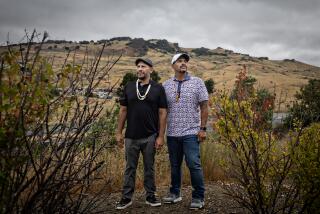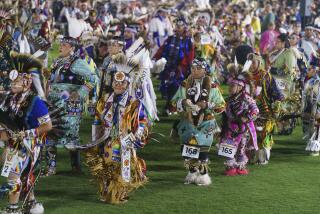Casino Questions Abound
- Share via
Nevada-style slot machines are being trucked into California as the state evolves into a full-fledged gambling mecca--bigger, in time, than any but Nevada itself. The voters wanted casino gambling and it is here, eventually to produce revenues put at $4 billion a year. But big-time gambling, operated by California Indian tribes, brings with it a cloud of unanswered questions.
How many casinos will there be? How many slot machines will be allowed? What is the state’s regulatory role? Will the expansion remain modest, as Gov. Gray Davis has promised? Or will it grow unchecked?
Davis and Atty. Gen. Bill Lockyer should report regularly to the people on the status of California casino growth. Though the tribes are sovereign entities, it’s only good business for them to work closely with the state to make sure the clubs are well regulated and honest.
Federal officials have ratified the gambling compacts negotiated by the Davis administration last fall and approved by voters in March. Sixty tribes are involved so far. The pacts allow the existing 19,000 machines to increase to 45,206 slots, Davis says. But the compacts are legally murky and subject to interpretation. For instance, the legislative analyst’s office believes tribes are eligible to operate as many as 113,000 slot machines.
A tribal group recently conducted a confidential allocation of slot machine quotas among tribes. Tribal attorneys said there are more than enough machines to meet demand, but the number of slots authorized has not been announced. This is troublesome. Why the need for secrecy? And what if it’s more than 45,206 machines? Assemblyman Bruce Thompson (R-Fallbrook), the Legislature’s most vocal critic of casino gambling, asks: “Who is going to take them out . . . Gray Davis . . . Bill Lockyer?”
Thompson’s point is that the tribes have become major political players in California, having donated more than $7 million to candidates in the last election, including $902,605 in cash, in-kind contributions or independent expenditures to Davis’ gubernatorial effort. Most politicians are not inclined to buck such a potent fund-raising force.
Major casino centers will include parts of San Diego County, the Palm Springs area and the Sierra foothills above Sacramento. Some tribes will operate their own new or expanded casinos. Others have contracted with outside gambling firms to build and operate casinos.
Harrah’s Entertainment Inc. will build a $110-million casino for the 600-member Rincon band of Mission Indians north of San Diego, opening late in 2001. Harrah’s President Philip G. Satre says his firm will have rigid security, surveillance and auditing operations similar to those in its Nevada casinos and will work closely with tribal regulators. No one under 21 will be allowed to gamble at Rincon, although the compacts set the minimum age at 18. As it does elsewhere, Harrah’s will operate a program to assist problem gamblers--a good example for the others.
The tribes know it’s in their interest to run a tight ship in the absence of clear state or federal controls. The success of this expansion of gambling in California depends on the openness and integrity of both the tribes and state government.
More to Read
Get the L.A. Times Politics newsletter
Deeply reported insights into legislation, politics and policy from Sacramento, Washington and beyond. In your inbox twice per week.
You may occasionally receive promotional content from the Los Angeles Times.










